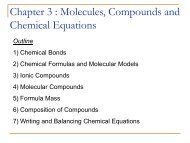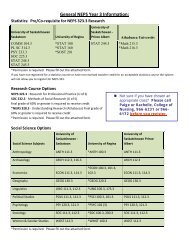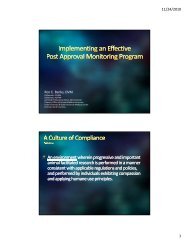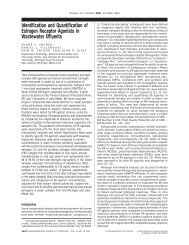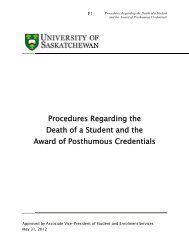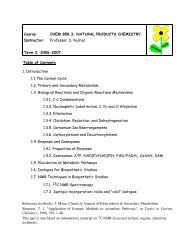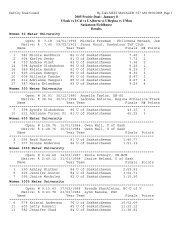Myelodysplastic Syndrome Treatment Guidelines
Myelodysplastic Syndrome Treatment Guidelines
Myelodysplastic Syndrome Treatment Guidelines
Create successful ePaper yourself
Turn your PDF publications into a flip-book with our unique Google optimized e-Paper software.
Introduction:<br />
<strong>Myelodysplastic</strong> <strong>Syndrome</strong> <strong>Treatment</strong> <strong>Guidelines</strong><br />
<strong>Myelodysplastic</strong> syndrome is the most common hematologic malignancy of the elderly. It is an<br />
acquired primitive stem cell disorder resulting in ineffective hematopoiesis manifested by variable<br />
degrees and numbers of cytopenias, and an increased risk of transformation to acute leukemia<br />
(35-‐40%). MDS is relatively common with a reported incidence of 3.5-‐4.9 per 100,000. The<br />
incidence increases to 28-‐36/100,000 beyond age 80, making it as common as CLL or myeloma in<br />
this age group.<br />
Diagnosis:<br />
Patients with MDS typically present with peripheral blood cytopenias, which are recognized<br />
incidentally when a complete blood count is performed or which result in symptoms reflecting<br />
anaemia, neutropenia, or thrombocytopenia. Although anaemia is common in older adults, a<br />
diagnosis of MDS should be considered in anaemic elderly patients, particularly when<br />
accompanied by other cytopenias, or an increase in the MCV or RDW.<br />
The diagnosis of MDS is dependent on demonstration of dysplastic features in the peripheral<br />
blood and marrow. Flow cytometry of bone marrow cells can show characteristic abnormalities in<br />
MDS. While MDS is most commonly associated with increased bone marrow cellularity,<br />
myelofibrotic and hypoplastic variants are also reported. Classically, MDS has trilineage dysplasia,<br />
but occasionally dysplasia may be confined to 1 or 2 lines.<br />
WHO classification of MDS (2008):<br />
<strong>Myelodysplastic</strong> <strong>Syndrome</strong>s:<br />
a) Refractory cytopenia with unilineage dysplasia (RA,RN,RT)<br />
b) Refractory anemia with ringed sidroblasts (RARS).<br />
c) Refractory cytopenia with multilineage dysplasia (RCMD) ± RS<br />
d) Refractory anemia with excess blasts (RAEB, 1 and 2) .<br />
e) 5q-‐ <strong>Syndrome</strong><br />
f) MDS , unclassifiable
International Prognostic Scoring System (IPSS) ,Greenberg et al.<br />
Scoring points 0 0.5 1.0 1.5 2.0<br />
Bone marrow blasts (%) 2.5<br />
WHO Based Prognostic Scoring System (WPSS):<br />
Factors already included in the WHO subgroup or in the IPSS such as cytopenias, cytogenetic risk<br />
factors (the same subgroups as in the IPSS) and bone marrow blast counts were used. According to<br />
the data on the importance of transfusion dependency this feature replaced cytopenia. The WPSS<br />
discriminates five prognostic groups ranging from very low to very high risk with significant<br />
differences for overall and leukemia free survival.<br />
WPSS (Adapted after Malcovati et al):<br />
Scoring points 0 1 2 3<br />
WHO subtype RA, RARS RCMD, RCMD-‐RS RAEB-‐1 RAEB-‐2<br />
Cytogenetics Good Intermediate Poor<br />
Transfusion<br />
requirement No Regular<br />
Cytogenetics: Good risk: Normal, -‐y, 5q-‐, 20q, Intermediate risk All others, Poor risk: Complex or<br />
chromosome 7 aberrations<br />
Transfusion dependency: at least one transfusion every 8 weeks over a period of 4 months<br />
Risk group :Very low: 0 , Low: 1, Intermediate: 2 , High: 3-‐4 , Very high: 5-‐6
Work Up:<br />
Baseline Investigations:<br />
The following should be performed in most patients with MDS at time of initial assessment:<br />
• History and Physical Exam<br />
• CBC, differential Blood film with Retic count.<br />
• Liver and renal profile<br />
• Vitamin B12, red cell folate, ferritin, iron saturation TSH Serum<br />
• Serum EPO level<br />
• Direct antiglobulin test (DAT)<br />
• Bone marrow aspirate and biopsy with cytogenetics<br />
• DR 15 testing should be ordered if patient being considered for immunosuppressive<br />
therapy<br />
• JAK2 mutational testing in patients with myeloproliferative features e.g. thrombocytosis or<br />
leukocytosis<br />
• PNH testing by flow cytometry<br />
• If patient has secondary MDS, then specific chromosomal abnormalities (e.g. chromosome<br />
5, 7 or 11) may be requested by FISH if conventional cytogenetics fail to show dividing cells.
<strong>Treatment</strong>:<br />
<strong>Treatment</strong> is based on age, performance status and IPSS (Lower risk, including low and<br />
Intermediate 1 versus higher risk including Intermediate 2 and high IPSS patients or transfusion<br />
dependent patients who failed conventional measures)<br />
<strong>Treatment</strong> objectives for lower risk patients are:<br />
1. Improve blood cytopenia<br />
2. Improve quality of life<br />
<strong>Treatment</strong> objectives for higher risk patients are:<br />
1. Delay disease progression<br />
2. Prolong survival.
• ESAs (EPO and darbepoetin)<br />
• Lenalidomide ( del 5q)<br />
• Immunosuppression<br />
• Transfusion<br />
1. Patients with Symptomatic Anemia:<br />
<strong>Treatment</strong> Options for Lower Risk MDS:<br />
• If serum epo is < 500 and/or transfusion requirement is less than 2 units / month, start<br />
treatment with ESAs even in 5 q-‐ syndrome<br />
• Dosing: Epo : 40-‐60,000 U once weekly X 8<br />
60-‐80,000 U weekly X 4 if no response.<br />
Aranesp : 500 mcg sc q 3weeks X 2 months<br />
500 mcg sc q 2 weeks if no response.<br />
• Response defined by :<br />
1. Transfusion dependent patients:<br />
• Decrease frequency by 50 %<br />
• Freedom from transfusions<br />
2. Transfusion –independent patients:<br />
• Increase Hb level ( Maximum target is 120 g/L)<br />
• Alleviation of symptoms<br />
• Therapeutic trial : 12 weeks<br />
• Role of GCSF: Upfront in pts with RARS<br />
In addition to EPO in failed patients for 4 weeks trial.<br />
Dose is 100 µmg sc 3 times /week<br />
• In patients with 5 q-‐ syndrome who failed EPO treatment, start Lenalidomide<br />
• Dosing : 10 mg/day for 21 days q 28 days.<br />
• Titrate the dose according to hematological toxicity.<br />
• Monitoring: CBC weekly for the first 8 weeks and monthly thereafter.<br />
• RFT once monthly.<br />
• Response defined by :<br />
§ Transfusion dependent patients:<br />
o Decrease frequency by 50 %<br />
o Freedom from transfusions<br />
§ Transfusion –independent patients:<br />
o Increase Hb level<br />
o Alleviation of symptoms<br />
o Therapeutic trial : 4 months
• Management of cytopenia:<br />
o ANC < 1X109 /L: DC or GCSF<br />
o ANC < 0.5X109 /L: DC and restart at a lower dose after one week if ANC ><br />
0.75X109 /L<br />
o Platelets < 30,000 : DC and restart at a lower dose once > 50,000<br />
• Patient who achieved CCR have More duration of response, less progression to AML and<br />
better OS<br />
• Lenalidomide has limited efficacy in pts with other CG abnormalities.<br />
2. <strong>Treatment</strong> of neutropenia:<br />
• Routine use of GCSG is not recommended<br />
• Antibacterial prophylaxis is of questionable value, hower treatment of febrile neutropenia<br />
is strongly recommended.<br />
3. <strong>Treatment</strong> of thrombocytopenia:<br />
• TPO agonist is not recommended due to concerns of increased AML progression and<br />
increased marrow fibrosis.<br />
4. Use of Immunosuppressive therapy:<br />
• Is generally indicated in lower risk MDS with hypocellualr marrow, young age , presence of<br />
HLA DR 15 patients.<br />
• <strong>Treatment</strong> is with combination ATG and cyclosporine.
1. Stem Cell Transplantation:<br />
<strong>Treatment</strong> Options for Higher Risk MDS:<br />
• Indications:<br />
o Patients with higher risk MDS (Intermediate 2 and high risk IPSS) or lower risk<br />
transfusion dependent who failed other treatment measures.<br />
o If the patient has less than 10 % blasts he can proceed directly to SCT, otherwise<br />
Debulking before transplant will be considered.<br />
• Patients up to the age of 60 years without co morbidities will receive myeloablative<br />
conditioning regimen prior to stem cell infusion, however patients between 60-‐65 years or<br />
patients with co morbidities will receive reduced intensity conditioning regimen.<br />
2. Azacitadine:<br />
• Indications: As a frontline therapy for higher risk MDS including WHO defined AML (blasts<br />
20-‐30%) who are ineligible or cannot proceed immediately to SCT.<br />
• Dosing : 75 mg/m 2 /day for 7 days (5-‐2-‐2) q 28 days.<br />
• Monitoring: CBC weekly for the first 2 cycles and adjust according to response.<br />
• Response defined by:<br />
o Hematological improvement<br />
o Transfusion independence or reduced frequency.<br />
o Reduction in number of infections requiring Abs<br />
• Azacitadine can be used in older patients not ready for SCT especially with unfavorable CG<br />
• Hematological toxicity: No modification especially in the first 2 cycles.<br />
• Therapeutic trial : 6 cycles ( 6 months)<br />
• HI improvement is associated with improved survival.<br />
• Patients > 75 y showed same OS advantage.<br />
• Azacitadine improved survival in pts with 20-‐30 % blasts.<br />
3. AML like induction chemotherapy (7+3) : can be used in higher risk MDS as a bridge to SCT<br />
especially in younger patients with available HLA matched donor.
Chelation Therapy in MDS:<br />
• Indications: Lower risk MDS or higher risk indicated for SCT with secondary iron over load<br />
as measured by serum ferritin concentration threshold greater than 1000 µg/ml<br />
• Desferrioxamine (deferoxamine, Desferal )) administered by subcutaneous pump 30-‐40<br />
mg/kg daily subcutaneously for 5 days via CADD pump .<br />
• Deferasirox, Exjade at doses of 20 and 30 mg/Kg
Algorithm for treatment of lower risk MDS:<br />
Not symptomatic<br />
cytopenia<br />
watchfulwaiting<br />
(Rec. D)<br />
sEPO =2 U/month<br />
Lenalidomide<br />
MDS del<br />
(5q)<br />
sEPO
Algorithm for treatment of higher risk MDS:<br />
“very-old”<br />
Supportive care<br />
Rec. D)<br />
>65 years or<br />
Poor performance<br />
status<br />
< 75 – 80 years<br />
Hypomethylatin<br />
g<br />
Agents<br />
(Rec. B)<br />
Intermediate-2 or High<br />
IPSS risk<br />
No suitable stem cell<br />
donor<br />
Hypomethylating<br />
agents<br />
OR<br />
AML-like CT<br />
(Rec. B)<br />



